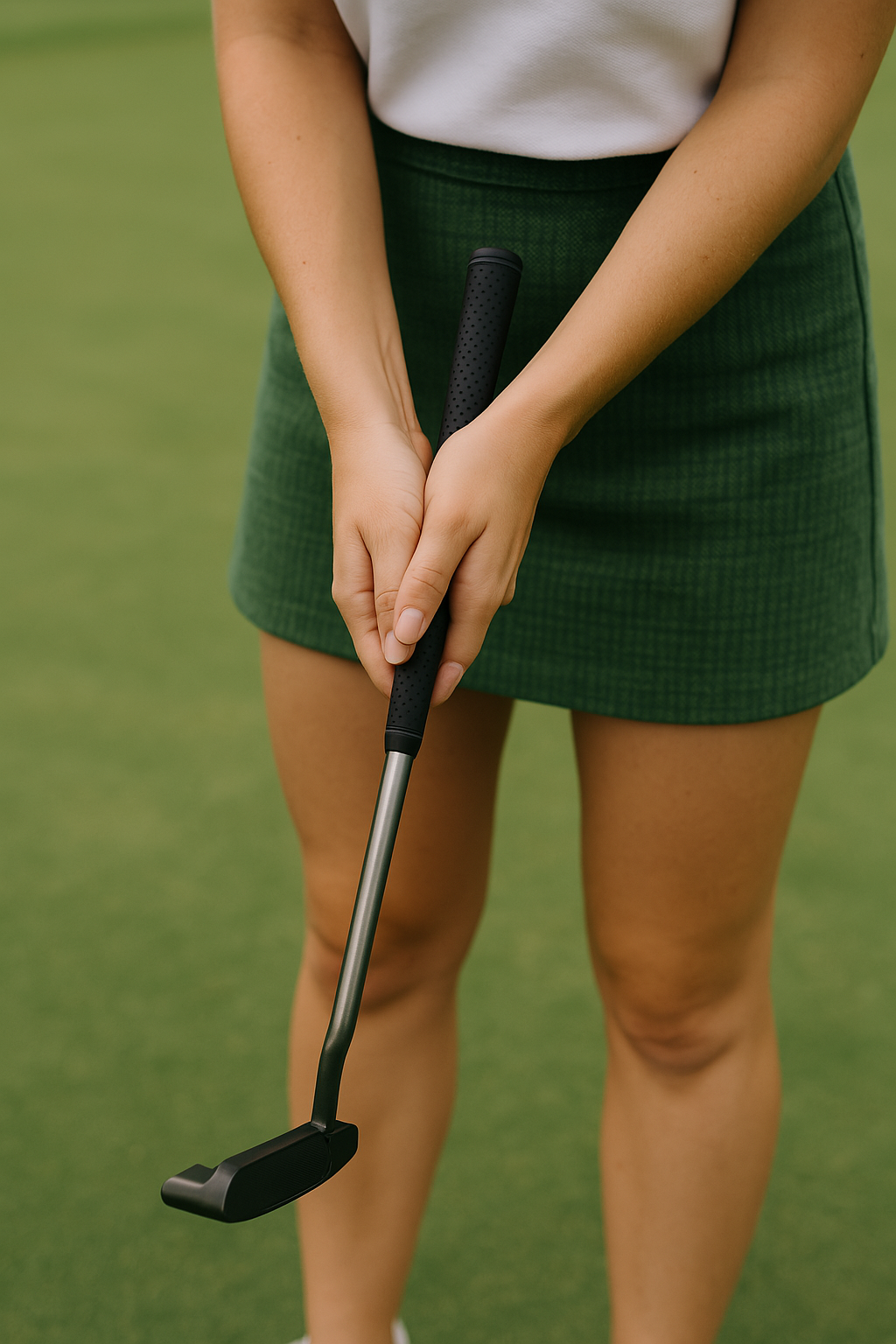
Mastering the Green: 7 Putting Grips Every Baddi Golfer Should Know
Share
Putting is where games are won—and lost. The grip you use can dramatically affect your control, accuracy, and distance. This guide breaks down 7 popular putting grips and explains which might suit your game best, so you can sink more putts with confidence.
Whether you're chasing birdies or just trying to avoid a three-putt, your putting grip can make or break your game. Let’s break down the most popular putting grips, how they work, and why they might be your secret weapon this summer.
1. Reverse Overlap Grip
What it is: The most common putting grip in golf. Your left index finger (for right-handed players) overlaps the pinky finger of your left hand. If you use a conventional grip for all of your other clubs, the only difference here is that instead of your pinky resting on TOP of your index finger, your left index finger will rest on top of your pinky. Adds a bit more wrist stability for putting.
Why it works: It stabilizes the wrists and promotes a pendulum-like stroke.
Best for: Players who want a classic, reliable feel with minimal wrist action.

2. Left-Hand Low (Cross-Handed) Grip
What it is: Your left hand sits below your right hand on the grip (for right-handed players).
Why it works: Levels the shoulders and reduces wrist breakdown, leading to better alignment and consistency.
Best for: Golfers who struggle with short putts or tend to push/pull.
3. Claw Grip (For a girl who loves her claws)
What it is: Left hand holds the top of the grip normally, while the right hand “claws” the side of the grip with fingers pointing downward.
Why it works: Minimizes right-hand dominance and helps keep the putter face square.
Best for: Players with shaky hands or inconsistent strokes.
4. Arm Lock Grip
What it is: The grip and shaft are pressed against the lead forearm, with both hands working as one unit.
Why it works: Creates a locked-in, repeatable stroke with minimal wrist movement.
Best for: Golfers seeking stability and consistency under pressure.
5. Prayer Grip
What it is: Both palms face each other symmetrically on either side of the grip.
Why it works: Promotes balance and symmetry in the stroke.
Best for: Players who want a centered, neutral feel.

6. Pencil Grip
What it is: Similar to the claw, but the trail hand holds the grip like a pencil.
Why it works: Reduces tension and allows for a smoother stroke.
Best for: Golfers who want a light, controlled feel.
7. The Saw Grip
What it is: A variation of the claw where the trail hand’s fingers are spread across the grip like a saw blade.
Why it works: Limits wrist action and encourages a straight-back, straight-through motion.
Best for: Players who struggle with yips or overactive hands.
Before you head out to test your new grip on the practice green, don’t forget to pack a little flair with you. Our Groovy Orange Star golf towel brings the heat with bold retro swirls and vibrant colors that scream summer sass. It’s more than a towel—it’s a vibe that keeps your putter polished and your confidence sky-high. Because who says the greens can’t be a runway too?
